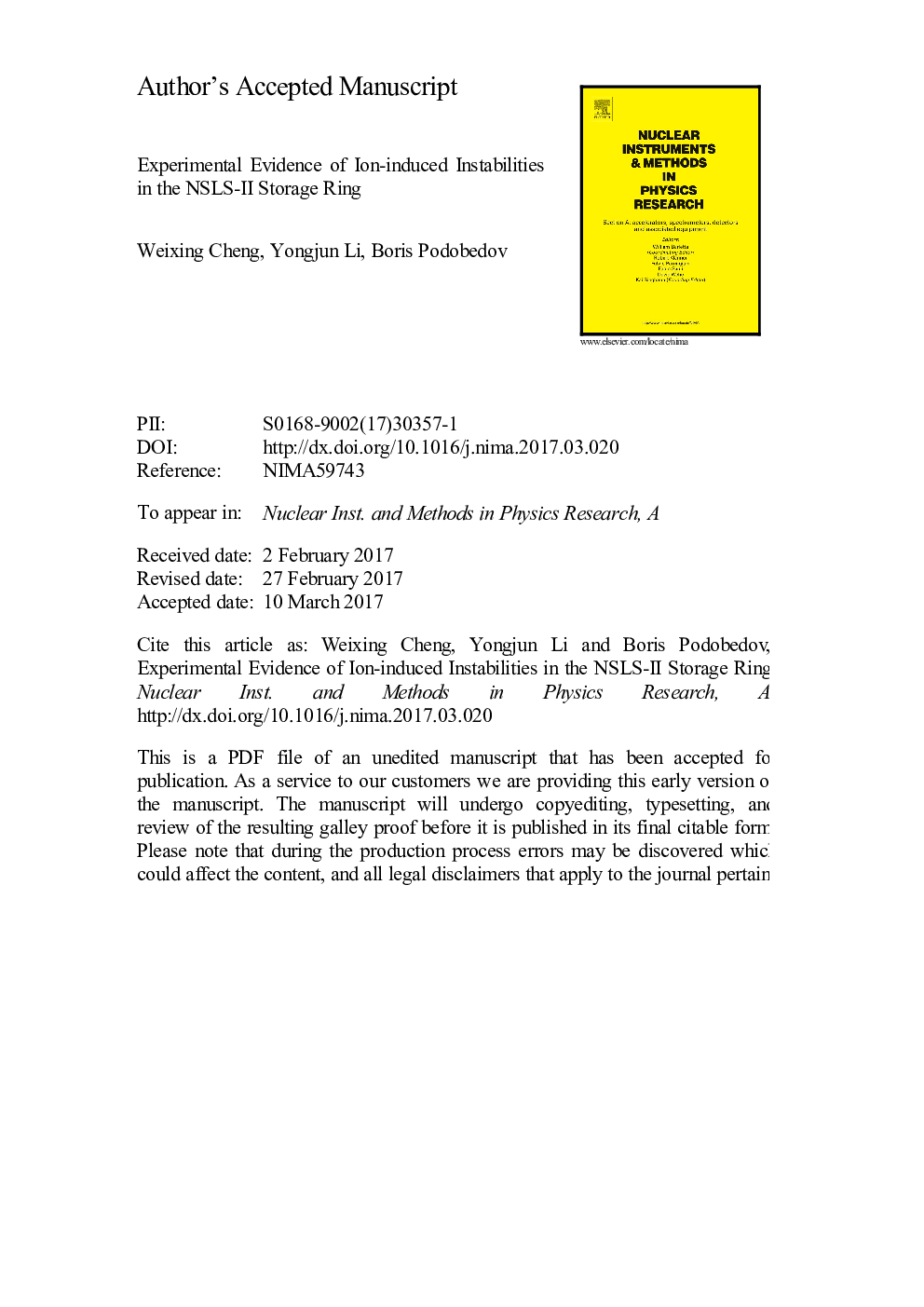| Article ID | Journal | Published Year | Pages | File Type |
|---|---|---|---|---|
| 5493345 | Nuclear Instruments and Methods in Physics Research Section A: Accelerators, Spectrometers, Detectors and Associated Equipment | 2017 | 13 Pages |
Abstract
Fast ion instability has been identified as one of the most prominent instabilities in the recently constructed NSLS-II storage ring at Brookhaven National Laboratory. At a relatively low beam current (~ 25Â mA) multi-bunch fills, ion-induced instabilities have already been observed during the early stages of machine commissioning. At present user operation with 250Â mA in ~1000 bunches, the fast ion still remains the dominant instability, even after months of vacuum conditioning at high current. Ion-induced dipole motions of the electron beam have been suppressed using the transverse bunch-by-bunch (BxB) feedback system. However other adverse effects of this instability, such as the vertical beam size increase along the bunch train cannot be cured by the feedback system. Therefore, to achieve the NSLS-II design current of 500Â mA while maintaining a small vertical beam emittance, it is important to further understand the fast ion instability and develop mitigation techniques. This paper reports on a series of ion-instability observations at various fill patterns and beam currents using start-of-art NSLS-II diagnostic tools.
Keywords
Related Topics
Physical Sciences and Engineering
Physics and Astronomy
Instrumentation
Authors
Weixing Cheng, Yongjun Li, Boris Podobedov,
